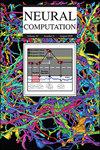Computing With Residue Numbers in High-Dimensional Representation
IF 2.1
4区 计算机科学
Q3 COMPUTER SCIENCE, ARTIFICIAL INTELLIGENCE
引用次数: 0
Abstract
We introduce residue hyperdimensional computing, a computing framework that unifies residue number systems with an algebra defined over random, high-dimensional vectors. We show how residue numbers can be represented as high-dimensional vectors in a manner that allows algebraic operations to be performed with component-wise, parallelizable operations on the vector elements. The resulting framework, when combined with an efficient method for factorizing high-dimensional vectors, can represent and operate on numerical values over a large dynamic range using resources that scale only logarithmically with the range, a vast improvement over previous methods. It also exhibits impressive robustness to noise. We demonstrate the potential for this framework to solve computationally difficult problems in visual perception and combinatorial optimization, showing improvement over baseline methods. More broadly, the framework provides a possible account for the computational operations of grid cells in the brain, and it suggests new machine learning architectures for representing and manipulating numerical data.用高维表示法计算残差数
我们介绍了残差超维计算,这是一种将残差数系统与定义在随机高维向量上的代数统一起来的计算框架。我们展示了如何将残差数表示为高维向量,从而可以通过对向量元素进行分量式并行运算来执行代数运算。由此产生的框架与对高维向量进行因式分解的高效方法相结合,可以在很大的动态范围内表示和运算数值,所使用的资源仅随动态范围的对数变化而变化,比以前的方法有了很大的改进。它对噪声的鲁棒性也令人印象深刻。我们展示了这一框架在解决视觉感知和组合优化等计算困难问题方面的潜力,并显示出与基线方法相比的改进。更广泛地说,该框架为大脑中网格细胞的计算操作提供了可能的解释,并为表示和处理数字数据提出了新的机器学习架构。
本文章由计算机程序翻译,如有差异,请以英文原文为准。
求助全文
约1分钟内获得全文
求助全文
来源期刊

Neural Computation
工程技术-计算机:人工智能
CiteScore
6.30
自引率
3.40%
发文量
83
审稿时长
3.0 months
期刊介绍:
Neural Computation is uniquely positioned at the crossroads between neuroscience and TMCS and welcomes the submission of original papers from all areas of TMCS, including: Advanced experimental design; Analysis of chemical sensor data; Connectomic reconstructions; Analysis of multielectrode and optical recordings; Genetic data for cell identity; Analysis of behavioral data; Multiscale models; Analysis of molecular mechanisms; Neuroinformatics; Analysis of brain imaging data; Neuromorphic engineering; Principles of neural coding, computation, circuit dynamics, and plasticity; Theories of brain function.
 求助内容:
求助内容: 应助结果提醒方式:
应助结果提醒方式:


